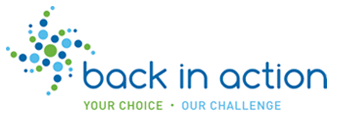Rowing is considered to be among the most physically demanding of all endurance sports
- Back in Action
- May 11, 2020
- 4 min read
The bio-mechanical demands of the rowing stroke and the rigorous nature of the associated training produce repeated forces of high magnitude to the lower back extensor muscles. These forces can be excessive and induce a back injury, particularly when fatigue impairs the contractile ability of the muscle. As a result, many rowers suffer from recurring episodes of lower back pain (LBP) despite their high level of physical conditioning.

Recent studies indicate that non-specific, non-structural LBP can be associated with excessive back muscle fatigue.
FAQs from Rowers
1. Why does rowing cause pain?
Rowing is an intense sport that involves repetitive flexion and extension of the spine. This repetitive motion can cause damage over time. Specifically, forward flexion at the waist (often seen between the recovery and the catch phase) can wreak havoc on the back.
2. How do I know if my rowing form is correct?
The first step in addressing this issue is checking your rowing form with a coach or other expert. An expert will be able to pick out form errors that may be causing or worsening your pain. You should do this step even if you have been rowing for a long time with the same stroke and not experienced pain. Painful problems often develop over a long time. These problems may seem to start overnight when in reality that have been slowly worsening and suddenly become painful. Here are some tips for proper form to avoid back pain:
Avoid letting the back round forward
Think power clean, keep your chest up and forward
Keep your core tight throughout the stroke
Avoid pulling too much with your torso. Your back shouldn’t extend far beyond 90 degrees
3. My form is correct, but my back still hurts. What’s going on?
Even when done correctly, the rowing motion places a great amount of stress on the spine. Each stroke compresses the discs in the spine. This can cause alignment issues and nerve irritation. Also, even well-conditioned athletes can develop muscle imbalances that can cause tears or joint inflammation. It’s easy to imagine how rowing from one side of a boat for weeks, months or years may cause musculoskeletal imbalances. Rowers often note an over developed latissimus dorsi, a pelvic tilt and other asymmetries.
4. What treatment options do I have for back pain due to rowing?
Gentle chiropractic adjustments are used to correct improper alignment. Targeted exercises may be used to correct muscle imbalances. Nerve flossing and myofascial release is often used to reduce long standing muscle adhesions and nerve irritation. Most cases respond well to conservative treatment.
5. How do I prevent back pain due to rowing?
Proper training can reduce the risks of back problems on the water. Here are some prevention tips to consider:
Strength train year-round. A balanced strength and conditioning program will go a long way for preventing future problems. Routines should be programmed around dynamic movements.
Use a dynamic warm up. Warm ups that involve moving stretches and activities (as opposed to static stretches) help reduce injury risk.
Train for core stability. A strong core is vital to maintaining spinal health. Ditch the sit ups as these can worsen back issues over time. Think planks, bird-dogs and bridges.
Muscles used in Rowing
Rowing places a large emphasis on the core muscles, as well as the muscles of the arms, shoulders and back. These muscles must have strength enough to efficiently and swiftly pull the oars through the water. The following muscles are strongly at play during rowing:
· In the upper back, the trapezius, rhomboids and latissimus dorsi muscles are used.
· Among the chest and shoulder muscles, the deltoids, rotator cuff muscles and the pectorals are involved.
· The muscles of hand, forearms, wrist and arms (the biceps and triceps) are important.
· The core muscles, such as the rectus abdominus and obliques, and the spinal erectors are involved.
· The large muscles of the buttocks and legs, including the gluteus muscles, the quadriceps and the hamstrings, provide power during the “Drive” portion of the rowing stroke.
Most Common Rowing Injuries
Rowers, whether competitive or recreational, repeat the rowing motion over and over again. This repetitive motion can lead to a number of chronic (overuse) injuries. Some of the more common rowing injuries include:
· Both upper and lower back strain, including disc injuries;
· Rib stress fractures;
· Wrist and shoulder injuries, including rotator cuff tendinitis and carpal tunnel syndrome;
· Iliotibial band (ITB) syndrome; and
· Knee injuries, including bursitis, patellar tendinitis and chondromalacia.
Injury Prevention Strategies
Thorough conditioning and training in proper technique are both essential in helping to prevent rowing injuries. Keep the following points in mind:
Complete a thorough warm-up prior to all training and especially before competition.
Cool down properly after training and competition (including stretching).
A comprehensive strength training program will help to minimize muscle imbalances and prevent many injuries caused by the repetitive movements required during rowing and other paddling sports.
Incorporate cardiovascular endurance training to prevent fatigue in later stages of training and competition.
A comprehensive flexibility training program will help prepare the muscles for activity and help prevent the muscle strain of rowing.
Instruction in biomechanics and the proper rowing technique (or form) will help prevent injuries caused by incorrect body mechanics.
See a chiropractor for a tune up. Keeping the spine in line is often easier than fixing an existing problem. An ounce of prevention is worth a pound of cure.
We pride ourselves in our caring and long-term relationships we develop with our patients, so to request an appointment, please contact us today. We look forward to seeing you.
